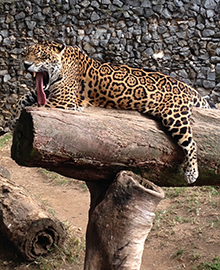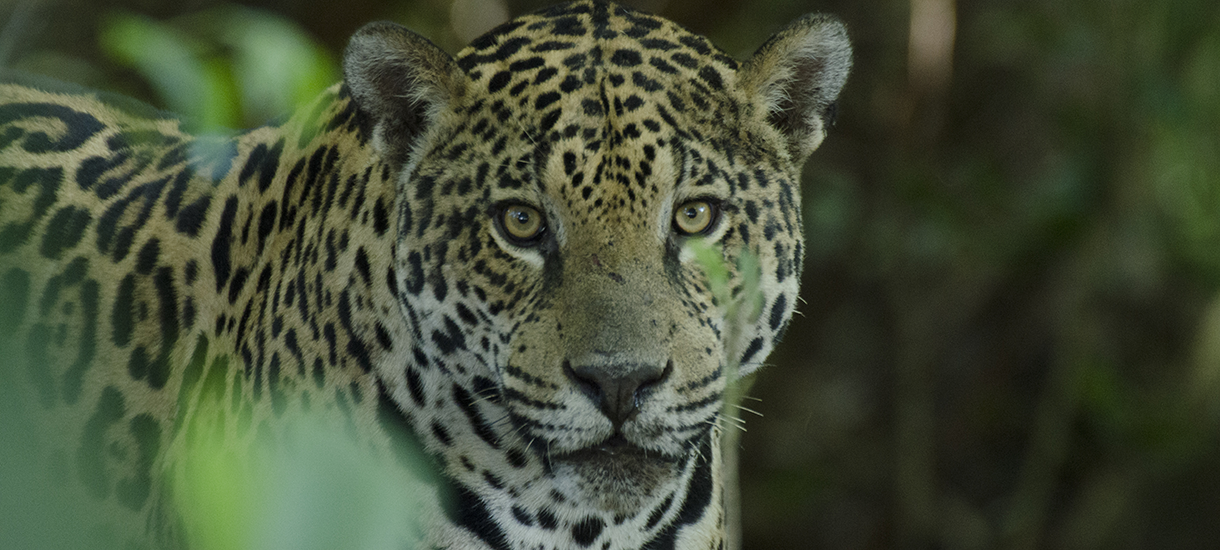Crossbreeding between jaguars and lions have originated new species
Coordinated by PUCRS, the genome sequencing of the jaguar, the largest feline in the Americas, which is now endangered, has been completed. An article about the genus Panthera, comparing genetic information of jaguars, tigers, lions, leopards and snow leopards, has been published in the journal Science Advances, of the American Association for the Advancement of Science. One of the findings of this investigation was that these different species produced hybrid crosses when shared the same habitat. This hybridization (exchange of genetic lionscomponents and production of fertile species) can be explained by the fact that the jaguar inherited traits from the lion, such as two genes involved in optic nerve development, which was likely to have been a factor of great importance to the animal in its quest for food. They could be found in Europe, Asia or North America, where ancestors of both species were found.
4,6 millions of years ago, the five major felines had a common ancestor, very similar to the current leopard. The reduction in the risk of extinction in the past, since species tend to lose their genetic variability over time, was hypothesized as a possible advantage for hybridization between species, according to Professor Eduardo Eizirik, who coordinates the study. “These animals appear in different numbers.” As top predators, they are susceptible to environmental changes, such as the reduction in the number of preys, which can quickly lead to the reduction in the number of individuals.” Today, all of them are endangered.
Why is it that the jaguar has a harder bite than other large felines, as it can prey on alligators and even turtles, with their hard shells? Researchers believe that this would be a reaction to a mass disappearance of the usual preys – large mammals, two million years ago. The study has also shown evidence of other genes that were subject to natural selection and which have facilitated the adaptation of species to new environmental conditions. “It pounces on the back part of the prey’s neck, which is more resistant. The other major felines usually pounce on the front part of the neck”, explains biologist Henrique Figueiró, the article’s lead author.
“The changes observed in hundreds of genes of each species were more dramatic than if such changes were to occur by chance”, comments Eizirik. Another evidence is the fact that the snow leopard has a different oxygen capacity. They live in the Himalayas, the highest mountain chain on the planet, which includes the Everest, and also in Tibet, Asia.
Five years were necessary to assemble the findings of this investigation. Once sponsorship for the project was obtained (CNPq, Fapergs and Tetrapak), researchers started working on the generation of data and recruiting collaborators to analyze parts of the genome. Eizirik selected some of the most prominent researchers from the USA, Ireland, Spain, Portugal, Russia and Argentina, as well as Brazilian partners to analyze this large quantity of information. Three of the aforementioned felines had their genomes fully analyzed. William Murphy’s group, from the University of Texas, conducted the sequencing of the jaguar as part of this study.
A definition for genome |
 The information contained in a genome could be used to complete as many as 3,000 books of 1,000 pages each, each of which containing 1,000 letters. Each human cell is composed of two of such structures: one originating from the mother, and the other, from the father. Sequencing provides information about the evolution of the species. VagalumeThe jaguar’s first genome was obtained from a jaguar named Vagalume (image), at the Sorocaba Zoo (SP). A native of the Pantanal area, and weighing 94 kilos, it was left there two years ago as a baby jaguar after the death of its mother, in the 2000s. |
Ground-breaking research on mammals
Covers of international journals illustrating research on felines and images of trees illustrating the evolutionary history of mammals are used to decorate Dr Eizirik’ living room and testify his contribution to science. Enjoying considerable reputation as a researcher in Brazil, he has been teaching at the School of Sciences for 13 years. He holds a Master’s degree from UFRGS and a PhD from the University of Maryland (USA). He conducted a post-doctoral internship at the National Institute of Health/USA and at PUCRS.
Looking for innovation
 After Mr Figueiró completed his Master’s, he accepted the challenge to work on the genome of the jaguar, as he was trying to give his career a solid direction. As he was working on his PhD in Zoology, under the supervision of Eduardo Eizirik, he spent a year at the University of California (USA), working with major scientists, such as mathematician Rasmus Nielsen, one of the most important global exponents in gene analysis methods.
After Mr Figueiró completed his Master’s, he accepted the challenge to work on the genome of the jaguar, as he was trying to give his career a solid direction. As he was working on his PhD in Zoology, under the supervision of Eduardo Eizirik, he spent a year at the University of California (USA), working with major scientists, such as mathematician Rasmus Nielsen, one of the most important global exponents in gene analysis methods.
A pioneer study has shown the habitat of these large predator felines, natives of Asia and Africa, which run away from lions and tigers by climbing trees. Geoprocessing techniques have been used to map leopards and have shown that the black panthers account for 10% of the species. Their black fur is best explained by gene mutation.
This investigation was part of the doctoral dissertation of Lucas Gonçalves, a student in the Graduate Program in Zoology, advised by Dr Eduardo Eizirik. American Journal PLoS One, of the Public Library of Science, has published an article on the topic. The investigation joined efforts from 120 researchers from 20 countries, who shared their contributions (many of them from camera traps, as they capture images of the animals in nature). “It was real hard work. Many of the studies available today are on tigers, lions and cheetahs, but images of leopards appear ‘by chance’. And so hundreds of pieces of information were available to us”, tells Lucas Gonçalves, who has also traveled to Australia, the USA and the UK as he was studying scientific collections. In addition to them, Ricardo Machado, from Universidade de Brasília, and nine scientists from the USA, Botswana, Thailand, Iran, Sri Lanka and Malaysia are featured in the article.
This information was useful for scientists to conduct the mapping of the species, as it has been shown that it can be found in the two continents, according to the environmental conditions. The technique (known as niche modeling) makes it possible to use geographical information from global sources, including information on temperature, moisture, vegetation and altitude. “This method had never been used before for assessing certain variations, such as color, within a same species”, claims Eizirik.
MOIST FORESTS
One of the conclusions is that the black panthers live largely in forests. These findings corroborate with Gloger’s rule, a German zoologist who, back in 1833, assumed that dark birds and mammals would be most commonly observed in areas like that. They could change their colors and approach their preys or hide from predators easily.
In order to have concrete answers, multiple analyses were conducted. Results were grouped in three different areas: total number of areas where the animals have been reported; the areas where they have been reported in Asia as a whole, and Southeast Asia. The group has found that the incidence of moisture is related to the large number of black panthers. However, it was necessary to prove whether this would be a direct or an indirect effect (since the stronger the moisture, the greener the area). Then, the researchers have found that the peninsula south of the Kra Isthmus (a narrow area connecting Malaysia to the rest of Asia) is inhabited solely by black leopards, whereas in the Northern area, the two species coexist in relatively similar numbers. “The setting shared by the two species were basically similar: a forest. Therefore, we concluded that the Southern part is more moist”, claims Eizirik.
How to tell a leopard from a jaguar apart?
Leopards inhabit Asia and Africa, whereas jaguars inhabit the Americas. The former is not as heavy as the latter but its fur is marked with small rosettes, whereas the latter has such a robust body marked with larger rosettes. Black animals are characteristic of either species.
A history of success at PUCRS |
 Lucas Gonçalves da Silva has a very long history as a student at PUCRS. As the undergraduate level, in the Biological Sciences program, he was a research initiation grantee at the Laboratory for Image Treatment and Geoprocessing, in the area of Geography. After the completed his Master’s in Zoology, he turned to Dr Eduardo Eizirik. “He is a world reference in this area of research and although I have never been in his classroom, we have been very close somehow. The nicest part of it is that my doctoral research involved biogeography, genetics, evolution and mammals.” He currently develops research at the Universidade Federal Rural de Pernambuco. |





